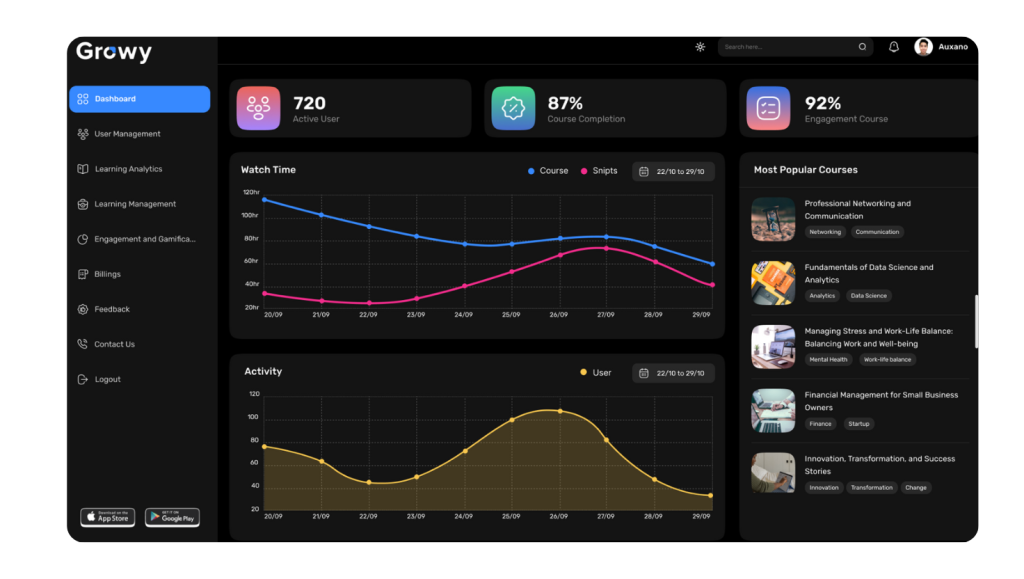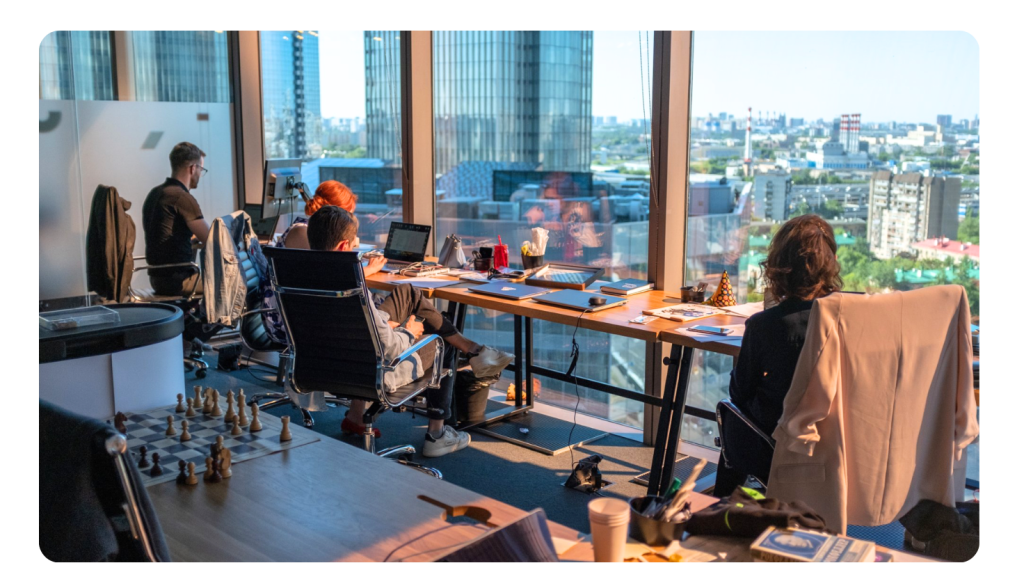
We send you all things hot & interesting from 200+ skill domains in to our community.

In today’s dynamic work landscape, one thing is certain: the workforce is more diverse in terms of multigenerational workforces than ever before. The clash of perspectives, communication styles, and expectations can be both a challenge and an opportunity. It’s essential to understand the nuances of managing generational diversity, especially in the context of remote or hybrid work settings.
In today’s ever-changing workplace, the concept of a multigenerational workforce has come to the forefront. This phenomenon reflects the coexistence of multiple generations, each characterized by its unique needs, expectations, and preferences in the labour market.
Before we explore the best practices for effectively managing and engaging a multigenerational workforce, let’s first gain an understanding of the five active generations:

Let’s explore the intricate task of simplifying interactions within this multifaceted environment.
A substantial amount of employee time is dedicated to searching for information in many organizations. This issue has become even more pronounced with the rise of remote work. Organizations grapple with the challenge of providing universal access to critical company information. Younger generations, in particular, seek quick and effortless access to information at their fingertips. Employers aspire to deliver the right content to the right employees, but achieving this goal remains a formidable challenge.
The means by which employees access information and perform tasks in the workplace have undergone significant transformation. Younger generations, like millennials, expect user-friendly tools and technologies. These technologies enable employees to access critical information and stay connected with colleagues, whether they are in the office, working remotely, or on the move. An understanding of the mobile habits of a multigenerational workforce is pivotal for maintaining productivity and effective communication.
Effective leadership stands as a cornerstone in managing a multigenerational workforce. Surprisingly, a mere 6% of organizations strongly believe that their leaders are adequately prepared for this endeavour. This statistic underscores the imperative for leaders to adjust their communication approaches to cater to diverse generations within their organizations. Understanding the unique perspectives of each generation and providing support is paramount. Leaders and managers play a pivotal role in motivating and engaging employees, being accountable for up to 70% of employee motivation. To effectively engage a multigenerational workforce, leaders must embody authenticity, consistency, and approachability, addressing the needs of all generations.
While transparency may be particularly valued by younger generations, such as millennials and Generation Z, it is increasingly expected by all employees. Organizations are investing in enhanced transparency to foster an employee-centric environment. To unlock the full potential of your workforce, the provision of clear and accessible information is fundamental. Many employers are still in the process of achieving comprehensive visibility into their multigenerational workforce, making it challenging to discern their needs and communication preferences effectively.
Each generation possesses distinct communication preferences in terms of style and channel. Baby boomers may lean towards email, while millennials and Gen Z favour video, webinars, and podcasts. Internal communication departments face the intricate task of delivering content that resonates with employees, considering factors such as age, interests, job roles, location, and personal preferences. Effective segmentation of internal audiences based on these elements is essential for the delivery of localized and engaging content.

In our journey within the Learning and Development (L&D) industry over the past four years at Growy, we’ve delved deep into understanding the dynamics of learning in the current workforce. The question we asked ourselves was, “What does learning mean in today’s diverse workplace?” Our findings have unveiled compelling patterns that pave the way for successful multigenerational communication and collaboration.
One significant revelation from our research is the pivotal role of learning as a cultural direction within a company. To effectively incorporate smart educational systems into the workplace, we advocate for the creation of an environment tailored to the schedules of team members. Our approach revolves around designing a learning path based on micro-learning and mobile learning, offering on-the-go learning experiences directly from smartphones. This not only accommodates different generations’ preferences but also enhances peer-to-peer learning in a gamified and engaging environment.
Through extensive testing with over 700 individuals, we observed that the format and flow of our platform positively impact interactions across different age groups. Our model emphasizes the importance of peer-to-peer learning, fostering a multicultural training environment. By infusing gamification elements, we’ve created an engaging space where individuals can learn collaboratively, breaking barriers and unlocking the full potential of multigenerational learning.
Our experience highlights the effectiveness of microlearning in driving completion and engagement rates. Traditional Learning and Management systems with standardized content and impersonalized experiences yielded low completion rates (between 5 to 15%) and moderate adoption rates (around 25%). In contrast, our approach centred around a social learning environment, microlearning modules, immediate practice, and personalized experiences based on user weaknesses and needs, achieved remarkable results. Completion rates soared above 80%, while genuine adoption rates reached an impressive 90%.
In conclusion, our journey at Growy underscores the importance of redefining learning strategies to accommodate the diverse needs of a multigenerational workforce. By embracing a cultural shift towards learning, incorporating mobile and microlearning, and infusing gamified elements, organizations can foster an environment where learning becomes a shared and engaging experience for every generation.
For further insights and a first-hand experience of our transformative approach to L&D, we invite you to connect with us at Growy.
In the rapidly evolving landscape of today’s workforce, bridging the communication gap between different generations is paramount. Effectively managing the exchange of information and knowledge across age groups ensures the preservation of valuable institutional know-how while fostering innovation and adaptability. Let’s delve into actionable strategies for facilitating communication and information flow in a multigenerational workforce.
Older generations, such as Traditionalists and Baby Boomers, often possess a wealth of experience and institutional knowledge. To ensure this invaluable know-how is not lost, organizations can implement mentorship programs. Pairing experienced leaders with younger counterparts creates a knowledge-sharing dynamic, allowing the transfer of skills and insights. According to a study by Deloitte, 70% of organizations consider mentorship programs crucial for knowledge transfer and skill development.
In a multigenerational workforce, effective communication is a two-way street. Encouraging younger employees to actively listen to the experiences and wisdom of their older counterparts fosters a culture of respect and collaboration. Forbes reports that organizations promoting active listening experience 40% less turnover, emphasizing the positive impact on employee engagement and retention.
Reverse Mentoring for Leadership
Embracing reverse mentoring, where younger employees mentor senior leaders, is a powerful strategy to bridge the generation gap. This approach exposes leaders to new perspectives, technological advancements, and emerging trends. According to a report by Harvard Business Review, companies like Cisco and General Electric have successfully implemented reverse mentoring, leading to increased innovation and a more agile leadership team.

To successfully navigate the complexities of a multigenerational workforce, organizations should strive to create a working culture based on diversity and inclusion. Leadership plays a pivotal role in driving this change by collaborating with the Head of Learning and e-learning providers to build a scalable and agile learning system within the company.
Understanding and leveraging the strengths of different generations in the workplace is the key to a harmonious and productive environment. As HR professionals, embracing generational diversity will not only improve teamwork and communication but also contribute to a stronger, more adaptable organization.
For further insights, you can refer to sources like McKinsey’s report on diversity and inclusion and Harver’s blog on generational diversity.
In today’s ever-evolving workforce, the tapestry of generations working side by side presents both a challenge and a remarkable opportunity. As HR professionals, it’s essential to embrace this diversity, understand its intricacies, and harness its potential.
To build a culture of inclusion and maximize the strengths of different generations, organizations must invest in scalable and agile learning systems. This collaboration between leadership and learning providers is the key to creating a harmonious and productive environment.
For further guidance and insights, we invite you to connect with us at Growy.
We’re here to support you in managing generational diversity and fostering collaboration in the modern workplace. Together, let’s create an environment where every generation’s unique strengths are valued, and innovation knows no boundaries. Book a call with us!











